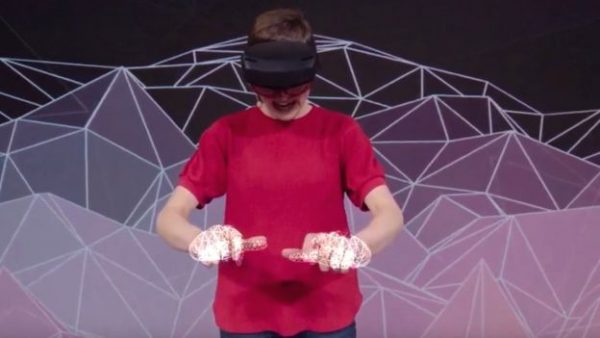Microsoft Unveils the HoloLens 2 Augmented Reality Headset
Microsoft has unveiled the second generation of its HoloLens augmented reality headset which is now capable of detecting where the users eye movements and hand movements. The new AR headset was showcased during a press conference in Barcelona. It promises to offer users new sets of features, greater comfort when wearing it and improved augmented and virtual reality displays. It’s not only lighter in weight but also better equipped and slightly cheaper than the original that the tech company released in 2016.
The new Microsoft HoloLens 2 looks like any AR headset built for gaming due to its Microsoft Kinect origins but the company is positioning it as an enterprise hardware product which will not only help boost productivity during use but also help in collaborative projects with the use of interactive holograms. The AR headset will make it possible for enterprise users to transform their personal computing use into a more collaborative computing experience where the AR device will be like your lens into a connected virtual world. With the HoloLens 2, a user will be able to convert any room into an infinite workspace where they can seamlessly teleport their presence to any place and also visualize and collaborate smoothly with other users.
Also significant during the press conference on the release of the AR headset was Microsoft’s declaration of its commitment to the core principles of openness in its mixed reality platforms. What this means is that Microsoft will offer cross-platform compatibility for its hardware that will enable the company to work with a cross section of software developers capable of creating app stores for the Microsoft HoloLens 2 headset. Presumably, Microsoft will not be levying any commissions for sales made via these collaborating stores.
Microsoft has also stated that it will provide an open access for its HoloLens environment to other web browsers from other tech companies such as Mozilla which is already working on a competing mixed reality browser.

The new commitments to the community are a sharp contrast to the conventional paradigm within which the mobile phone software industry has evolved over the recent past. This is the approach where the software is never device invariant but highly specific within a limited ecosystem. A good example of this has been Apple which prohibits certain apps from competing with its own store apps and has imposed a requirement that all consumer iPhone apps pass through its app store.
Google has been more liberal with its Android app store though European regulators have accused the tech giant of coercing or even forcing phonemakers to incorporate its apps and app store should they be interested in including Google’s other popular services onto their devices.

Microsoft aims to go beyond the mere provision of finished software and become a tech development partner for the many of its corporate customers. This new value proposition will also end up roping in more tech firms that can build software for its HoloLens AR headsets which is in stiff competition with other leading hardware from tech giants such as Facebook and HTC among others. Apple is also reportedly working on its own augmented reality headset so it’s going to be a crowded market where the slightest points of differentiation will give hardware manufacturers an edge.
The new Microsoft HoloLens 2 has been built with carbon fiber which gives it a lighter weight. It has also undergone a redesign which now makes it more comfortable for users to wear and it can fit easily over eye glasses. Microsoft has also augmented the details for the projections of holographic images for the headset wearer.
The HoloLens’ field of view has doubled enabling the holograms to spread across a wider field of view for the user. The new headset will mainly be targeted at developers and corporate users and will set buyers back some $3500, a more affordable price in comparison to the $5000 for the original models that were launched in 2016.
Microsoft’s open approach to the HoloLens 2 is in contrast to its previous business model that relied on a closed tech ecosystem to dominate the market with its personal and corporate server software products. The shift towards greater openness began under the tenure of CEO Satya Nadella who took over the stewardship of the company in 2014. That approach has already paid off in the company’s cloud service which is now a top player in the market just behind Amazon and will likely see a similar result with the HoloLens 2.
https://virtualrealitytimes.com/2019/02/26/microsoft-unveils-the-hololens-2-augmented-reality-headset/https://virtualrealitytimes.com/wp-content/uploads/2019/02/Microsoft-Launches-HoloLens-2-Augmented-Reality-Headset-600x337.jpghttps://virtualrealitytimes.com/wp-content/uploads/2019/02/Microsoft-Launches-HoloLens-2-Augmented-Reality-Headset-150x90.jpgAR HeadsetsHardwareHoloLensMicrosoft has unveiled the second generation of its HoloLens augmented reality headset which is now capable of detecting where the users eye movements and hand movements. The new AR headset was showcased during a press conference in Barcelona. It promises to offer users new sets of features, greater comfort...Sam OchanjiSam Ochanji[email protected]EditorVirtual Reality Times - Metaverse & VR

